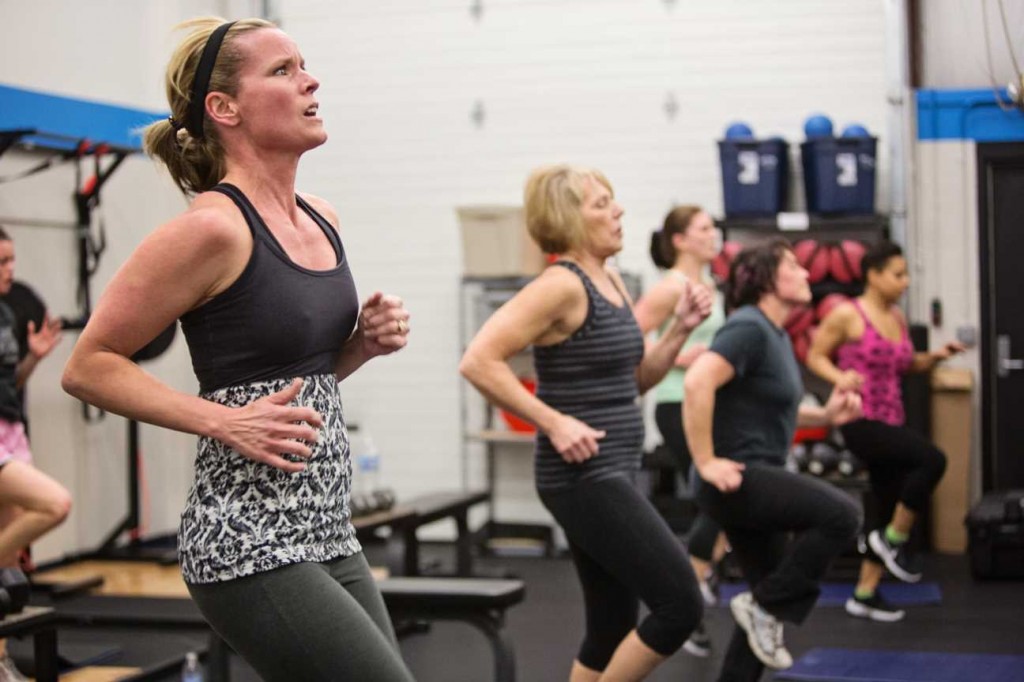
When most people decide they want to shed a few pounds the first thing that pops into their head is; I NEED TO START RUNNING. Jogging 3 miles 2-3 times per week is the normal routine most people undertake to shed unwanted fat. Let me start by saying this routine is better than nothing, and fat can definitely be lost partaking in this type of program. However, the question I always like to ask when engaging in an exercise program is not will it work, instead I ask; IS IT OPTIMAL?
The short answer, NO.
Let’s be clear, jogging, or in more scientific terms “steady state cardio (SSC),” is a good way to improve general fitness. For individuals who enjoy to jog for relaxation or social interaction I am all for it. However, for individuals trying decrease fat and maximize lean mass it is far from optimal and elicits no superior health benefits.
WHAT IS OPTIMAL?
High intensity interval training (HIIT) is currently making waves in the fitness industry, and for good reasons! HIIT is characterized by bouts of high and low intensity in various ratios.
For example:
- Warm Up for 5 minutes at a moderate intensity
- Perform 1 minute of maximal intensity cardio then 1 minute of low intensity cardio
- Repeat this 10-20 times
- Cool Down for 5 minutes
Numerous studies have shown HIIT to be superior to steady state cardio for maximizing lean mass and fat loss while being comparable to OR better than steady state cardio for cardiovascular health.
FAT LOSS
The majority of people looking to lose some fat would benefit more from HIIT than steady state assuming they have no health restrictions. Why?
- Burn more calories per unit of time. In addition, more calories are burned during the post-exercise period to return the body to resting levels.
- Higher levels of growth hormone release during HIIT (compared to SSC) results in greater fat loss. The primary role of growth hormone increases from HIIT is to break down fat.
- No decrease in metabolism like with steady state. The body adapts to high volume SSC. The energy-producing components of cells become much more efficient and thus fewer calories are expended.
- Cellular adaptations that increase the capacity to burn fat
LEAN MASS
Muscle tissue is extremely important to hold on to as we age. As the main driver of metabolism in the body, it allows us to burn more energy at all points in the day. In addition, it gives us the ability to stay independent and perform daily tasks. HIIT may not increase muscle mass but UNLIKE SSC it will not be detrimental to muscle and strength gains. Why?
- Neuromuscular system interference: Steady-state cardio interferes with the adaptations made by the neuromuscular system during strength training. This results in less strength via a reduced ability to maximal contract muscles. If your goal is to gain lean mass contracting fewer motor units is suboptimal.
- Energy Use: While HIIT uses more energy than steady state the fashion in which energy is depleted during steady state cardio cause higher levels of a byproduct that reduces protein synthesis (formation of new muscle or repair of injured muscle).
- Effect on testosterone: Chronic high volume endurance training has been shown to reduce testosterone in men.
CARDIOVASCULAR HEALTH
The numerous benefits of SSC are irrefutable. However, studies show that HIIT results in similar, in some cases, superior adaptations.
- Beneficial thickening of the heart muscle.
- Increased contraction force of the heart (stronger beats).
- More blood pushed out with each beat.
- Increased ability for the body to use oxygen. Oxygen enters the cells from the blood easier.
- Increased ability of the body to use insulin. Resulting in better blood sugar control.
- Increased capacity for fat breakdown by the cells.
CONCLUSION
The mode of cardio that you chose to partake in should be answered by one simple question. WHAT IS MY GOAL? If your goal is to be a better long distance runner then SSC is going to be the focus of your program. However, if your goal is to improve health or body composition your workouts should be focused around HIIT cardio and weight lifting assuming you have no medical restrictions.
About the Author:
-

Michael Stack is the founder & CEO of Applied Fitness Solutions and Frontline Fitness Pros. He is a faculty lecturer for the University of Michigan’s School of Kinesiology. He is also the creator and the host of the Wellness Paradox Podcast, produced in conjunction with University of Michigan.
Michael is an exercise physiologist by training and a health entrepreneur, health educator, and fitness industry advocate by trade. He is dedicated to enhancing the standard of practice of, and advocating for, fitness and wellness professionals to ensure they become an essential constituent in the healthcare delivery system.
With a career spanning over three decades in fitness, health, and wellness Michael has a deep knowledge of exercise physiology, health/wellness coaching, lifestyle interventions to mitigate chronic disease and leadership. He is credentialed through the American College of Sports Medicine (ACSM) as an Exercise Physiologist (ACSM-EP), Exercise is Medicine practitioner (ASCM-EIM), and a Physical Activity in Public Health Specialist (ACSM-PAPHS). Michael is a National Strength & Conditioning Association (NSCA) Certified Strength & Conditioning Specialist (CSCS), and a CDC Diabetes Prevention Program (DPP) Lifestyle Coach.
Michael received his undergraduate degree from the University of Michigan’s School of Kinesiology in 2004 and is currently a Master’s of Public Health (MPH) candidate at University of Michigan, with a specific concentration in health behavior and health education.
Michael is a board of directors’ member for the Physical Activity Alliance and Michigan Fitness Clubs Association. He sits on the University of Michigan’s School of Kinesiology Alumni Board of Governors. Michael is an expert curriculum reviewer for the American College of Lifestyle Medicine. Finally, he is a member of the executive leadership team for American Heart Association’s Heart Walk.
Michael lectures nationally for several health/fitness certification and continuing educations, including; IHRSA, the Medical Fitness Association, the National Strength & Conditioning Association, and SCW Fitness.
